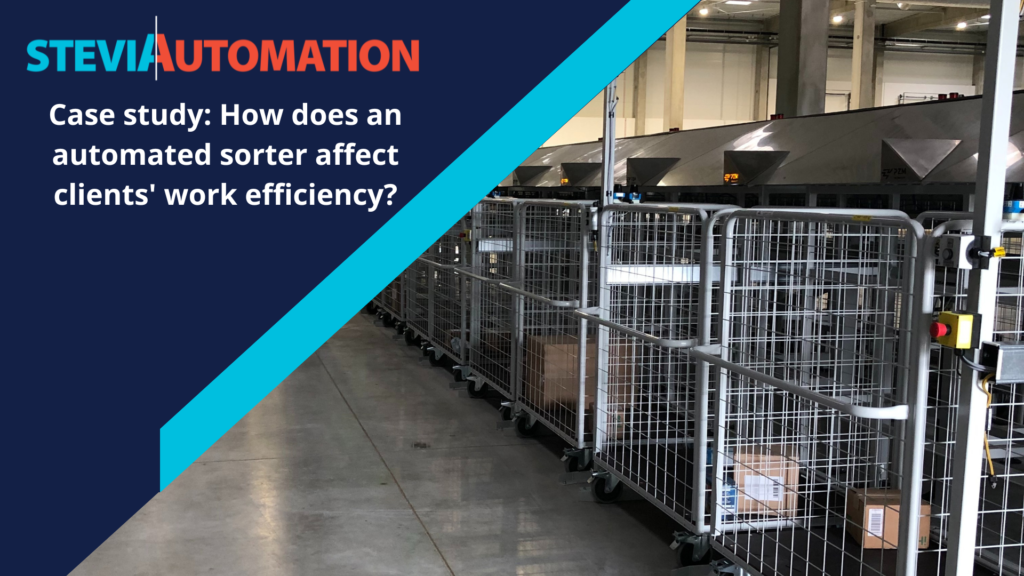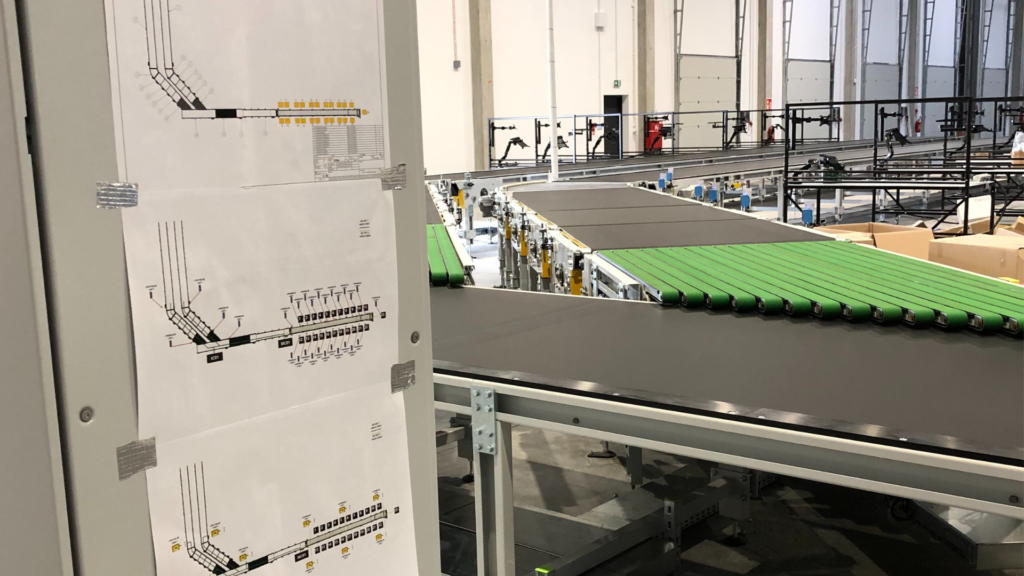What solution did the client need?
Our client was a courier company handling parcels usually packed in boxes, but also in plastic bags or envelopes. The client sent packages to various destinations and wanted to sort orders by location in a faster and more efficient manner. Manual sorting of parcels was too exhausting for the employees and involved a high risk of human error, which could result in a package being sent to the wrong location. The sorting process itself includes repetitive, monotonous tasks, as the flow of goods is constant. The main goal of our client was to sort parcels using a scanning system that reads barcodes. The system is capable of identifying a package by scanning the barcode placed on it, and after communicating with the WMS (Warehouse Management System), it can send the product to the appropriate location based on information received from the higher-level system.
The most important reason why our solution was chosen was our experience and the wide range of services we could offer the client. Our engineers analyzed the client’s needs and customized the sorting system to their requirements. The aspect of technical consulting is very important because from the very beginning, we establish our position as experts in the field, and through conversations with the client, we gain information about their operations. As a company, we can deliver complete software and conduct commissioning, as well as prefabricate control cabinets and perform electrical installation. We are also capable of preparing an EPLAN project for the system and conducting virtual commissioning in a 3D program, allowing the client to see a real digital twin of the system.
By delivering the automatic sorting system, we integrated a high-performance sorter, a scanning tunnel, and conveyor feeding lines. The automatic sorter handled various types of packaging, whether the package was a cardboard box, a plastic bag, or an envelope. In implementing the automated sorter, we utilized a scanning tunnel equipped with multiple cameras and sensors. At high speeds, the camera reads the barcode on each package, with the label placed on any side of the packaging.
Project Implementation – Step by Step
This project, like many others, consisted of four main phases:
- the preparation phase,
- the design phase,
- the implementation phase,
- the technical maintenance phase.
During the first phase, we defined the system requirements and prepared the Functional Design Specification (FDS) document, which detailed the assumptions of the entire sorting system. We selected the appropriate hardware and software and created the hardware specification, project schedule, and cost estimate.
Next, in the design phase, we prepared the complete mechanical and electrical documentation of the project. We created the source code and hardware configuration, tested the software using Emulate 3D, and prefabricated the control cabinets.
In the implementation phase, we installed the hardware and deployed the software, then conducted system tests at the client’s site. In this phase, we also supervised the system startup and provided technical training for the operators.
In the technical support phase, we offer warranty services, remote technical support, and regular inspections.
This project execution scheme has been effective for us for many years, allowing us to always complete projects on time and efficiently.
Distinctive Features of the Project
Looking at the completed project, the most distinguishing elements are:
- a high-throughput sorter capable of handling various types of packaging, a wide range of dimensions, and weight,
- a scanning tunnel that allows barcode reading from any side of the moving package. The scanning tunnel is equipped with cameras that can take a picture of each package and record its dimensions.
The implementation of the automated sorter has enhanced the client’s productivity by increasing the sorting process speed and replacing repetitive, monotonous tasks performed by workers with much more precise machines. The client’s sorting system is designed to handle product flows at a capacity of up to 5000 pieces per hour. It can process cardboard boxes, plastic bags, and envelopes of various dimensions, ranging from 100x150x10 mm to 800x800x800 mm, and weights from 0.01 kg to 30 kg. Additionally, equipped with AI-powered scanning cameras, the system can photograph and automatically measure each shipment. Images and dimensions are instantly available in the computer system, accessible to every department of the company. System operators have been trained in its operation, eliminating the need for manual scanning and sorting of each package, which is highly time-consuming and inefficient.
We were able to identify and understand our client’s challenges and develop a solution. The client, a courier company, sought to reduce shipping times and increase the percentage of accurate deliveries—ensuring the right goods reach the right recipients. Short delivery times and precision in every shipment are key to our client’s success, as they ensure customer satisfaction and foster a positive reputation in the market. This, in turn, builds trust among consumers when placing their orders with our client.
The client received full support at every stage of implementation. The sorter was thoroughly tested, and employees were trained. Our engineers maintained constant communication with the client during the initial post-launch period. This generated positive feedback from the client, who knew they could rely on us in any challenging situation.
The implemented solution has provided an efficient parcel sorting system, enabling faster delivery to every location. Automatic sorting of all packages and the ability to increase product flow efficiency and warehouse throughput are the main reasons why we can confidently say our solution significantly enhances our client’s efficiency. Additionally, warehouse operational costs are lower due to the investment in the automated sorter.







